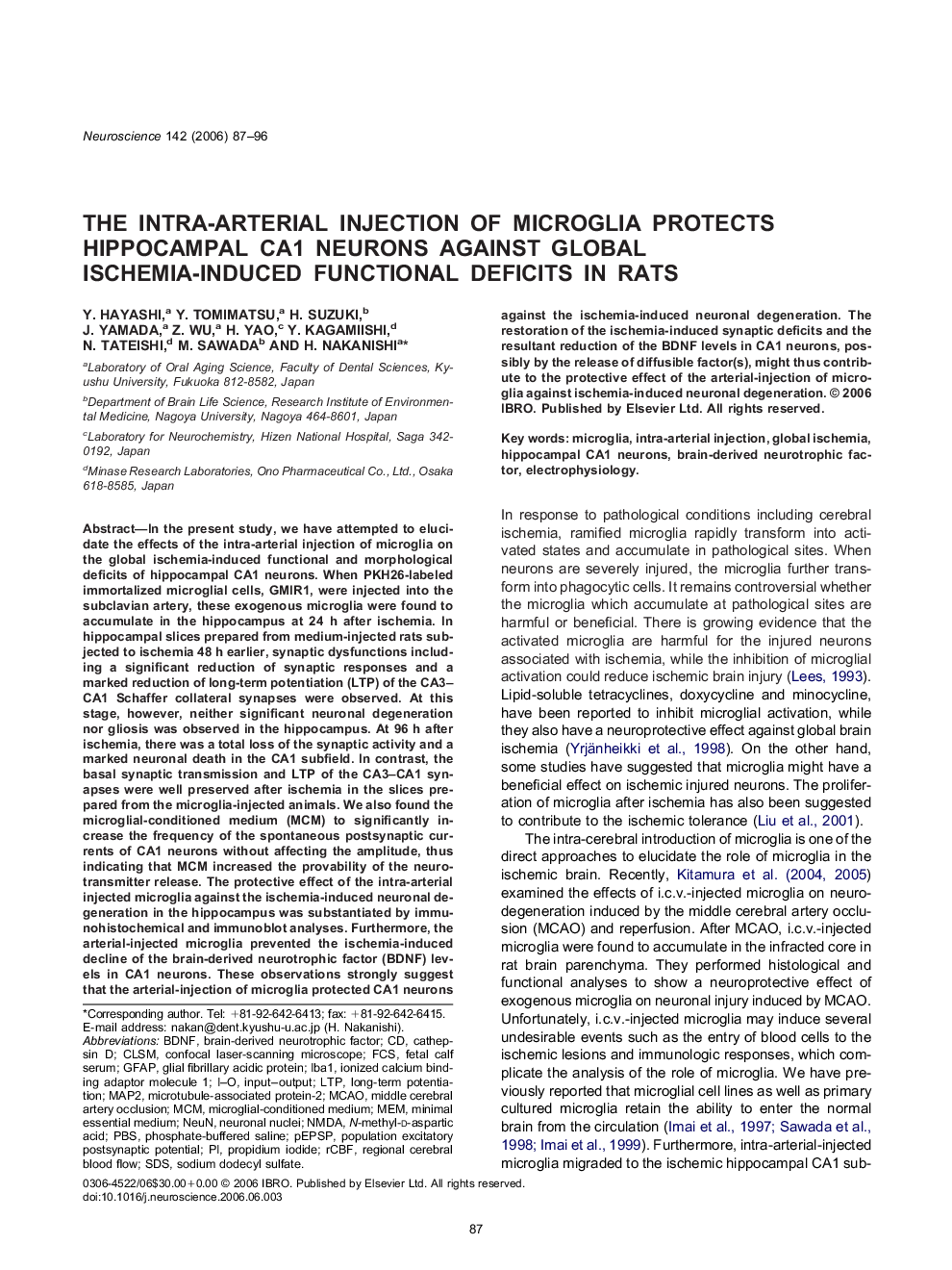| Article ID | Journal | Published Year | Pages | File Type |
|---|---|---|---|---|
| 4342444 | Neuroscience | 2006 | 10 Pages |
In the present study, we have attempted to elucidate the effects of the intra-arterial injection of microglia on the global ischemia-induced functional and morphological deficits of hippocampal CA1 neurons. When PKH26-labeled immortalized microglial cells, GMIR1, were injected into the subclavian artery, these exogenous microglia were found to accumulate in the hippocampus at 24 h after ischemia. In hippocampal slices prepared from medium-injected rats subjected to ischemia 48 h earlier, synaptic dysfunctions including a significant reduction of synaptic responses and a marked reduction of long-term potentiation (LTP) of the CA3–CA1 Schaffer collateral synapses were observed. At this stage, however, neither significant neuronal degeneration nor gliosis was observed in the hippocampus. At 96 h after ischemia, there was a total loss of the synaptic activity and a marked neuronal death in the CA1 subfield. In contrast, the basal synaptic transmission and LTP of the CA3–CA1 synapses were well preserved after ischemia in the slices prepared from the microglia-injected animals. We also found the microglial-conditioned medium (MCM) to significantly increase the frequency of the spontaneous postsynaptic currents of CA1 neurons without affecting the amplitude, thus indicating that MCM increased the provability of the neurotransmitter release. The protective effect of the intra-arterial injected microglia against the ischemia-induced neuronal degeneration in the hippocampus was substantiated by immunohistochemical and immunoblot analyses. Furthermore, the arterial-injected microglia prevented the ischemia-induced decline of the brain-derived neurotrophic factor (BDNF) levels in CA1 neurons. These observations strongly suggest that the arterial-injection of microglia protected CA1 neurons against the ischemia-induced neuronal degeneration. The restoration of the ischemia-induced synaptic deficits and the resultant reduction of the BDNF levels in CA1 neurons, possibly by the release of diffusible factor(s), might thus contribute to the protective effect of the arterial-injection of microglia against ischemia-induced neuronal degeneration.
